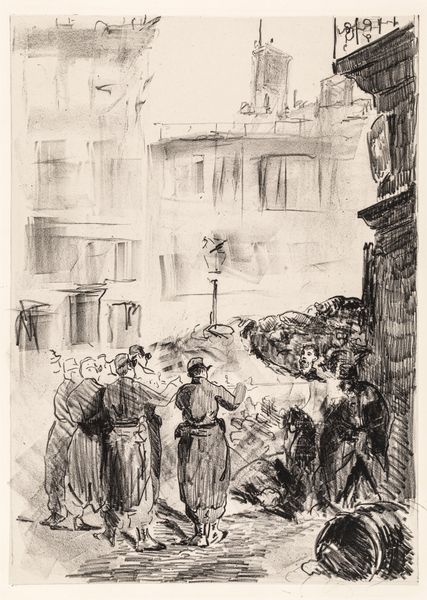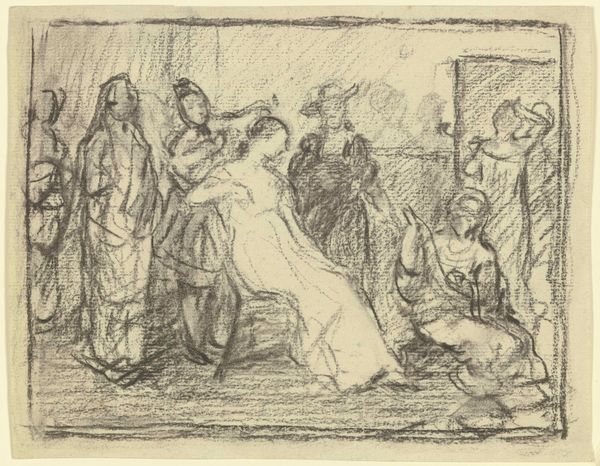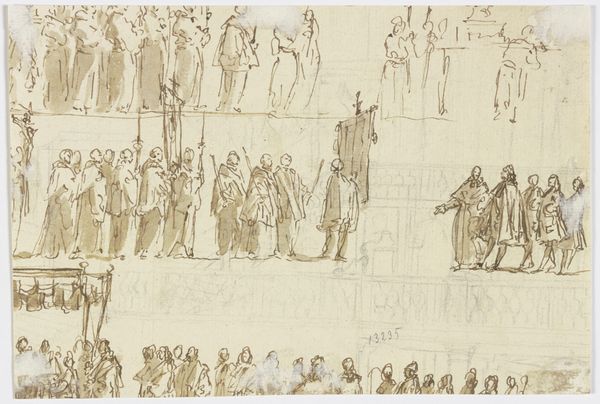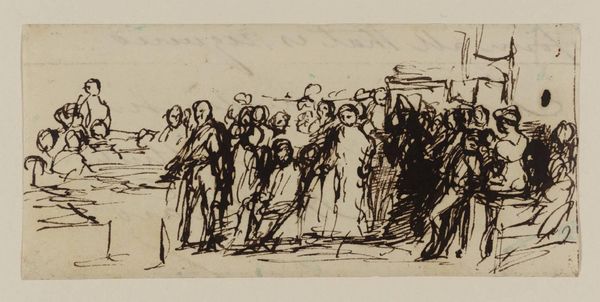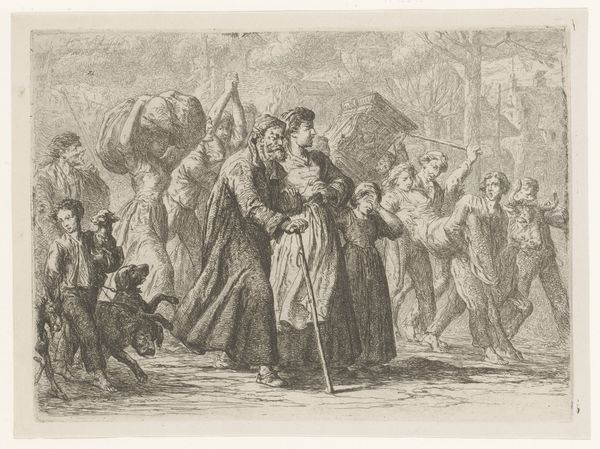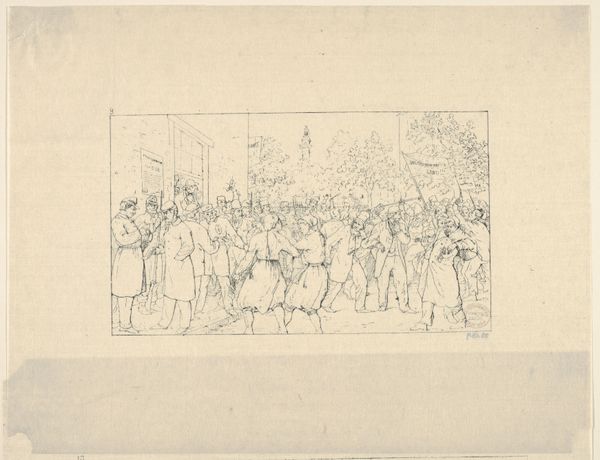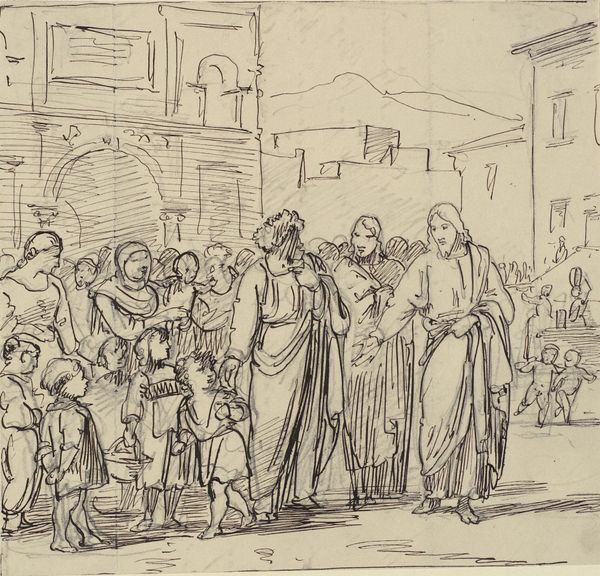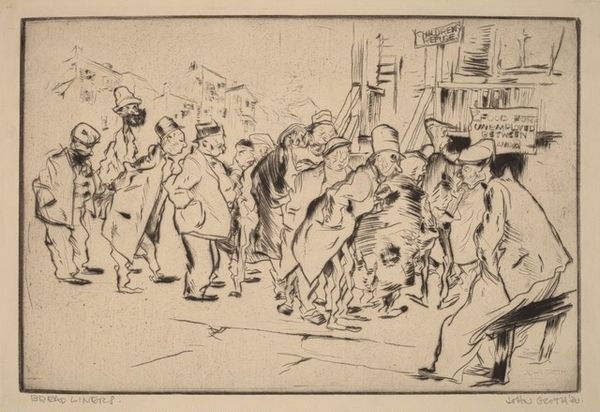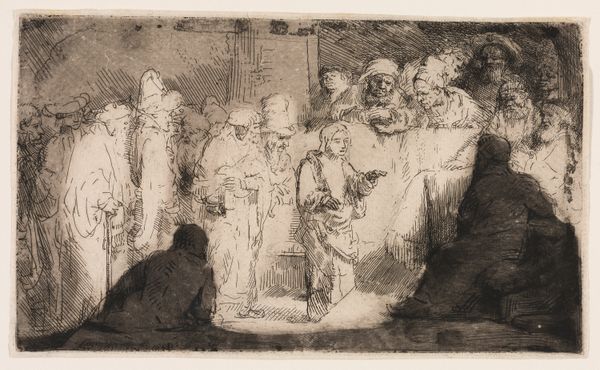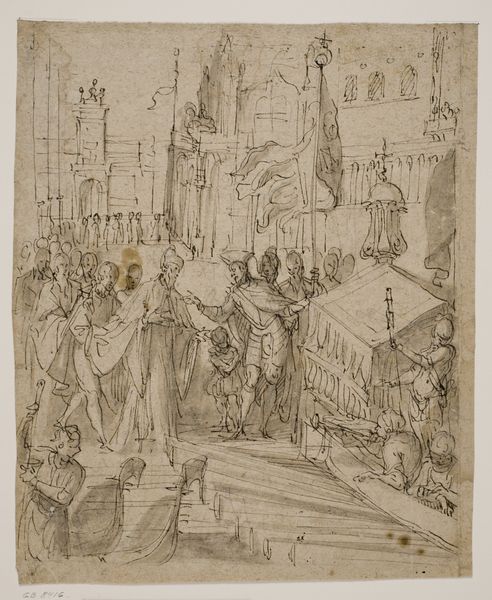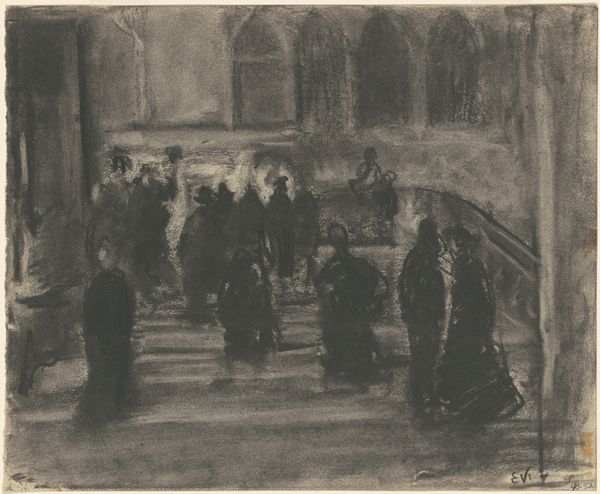
drawing, pencil
#
portrait
#
drawing
#
pen sketch
#
pencil sketch
#
pencil
#
genre-painting
#
realism
Dimensions: height 157 mm, width 224 mm
Copyright: Rijks Museum: Open Domain
Editor: Here we have "Ommegang van de Zoete Lieve Vrouw van Den Bosch", dating from sometime between 1889 and 1944, by Herman Moerkerk. It appears to be a pencil and pen sketch of a religious procession. The mood seems quite solemn and reverent to me. How do you interpret this work, especially considering its historical context? Curator: This drawing offers a fascinating glimpse into the performance of religious identity during a period of significant social and political change. Consider the era: late 19th to mid-20th century. What tensions might be present regarding religious expression within a rapidly modernizing world? What do you make of the choice to depict this scene, the “Ommegang”, and who participates? Editor: Well, everyone in the sketch seems to be wearing robes and appears to be participating. But why a drawing instead of a photograph, given the time period? And why focus on this specific religious event? Curator: Exactly! Why this choice of medium and subject matter? Consider that a drawing could be seen as less "objective" than a photograph. It's an interpretation. Perhaps Moerkerk is subtly highlighting the constructed nature of collective identity and belief, representing how shared rituals shape social bonds and reinforce existing power structures. Think about how gender and class might intersect here too - who is performing the rituals and who is witnessing? How does that affect their place in this society? Editor: That's really interesting. So you're saying it's not just a straightforward depiction, but possibly a commentary on the role of religious performance in shaping societal structures and identity? Curator: Precisely. It invites us to consider how these public displays, especially in times of change, are deeply intertwined with questions of power, belonging, and social order. Editor: I hadn't considered it that way. It’s given me a whole new perspective. Thank you! Curator: My pleasure. Looking critically is the first step toward affecting meaningful change!
Comments
No comments
Be the first to comment and join the conversation on the ultimate creative platform.

